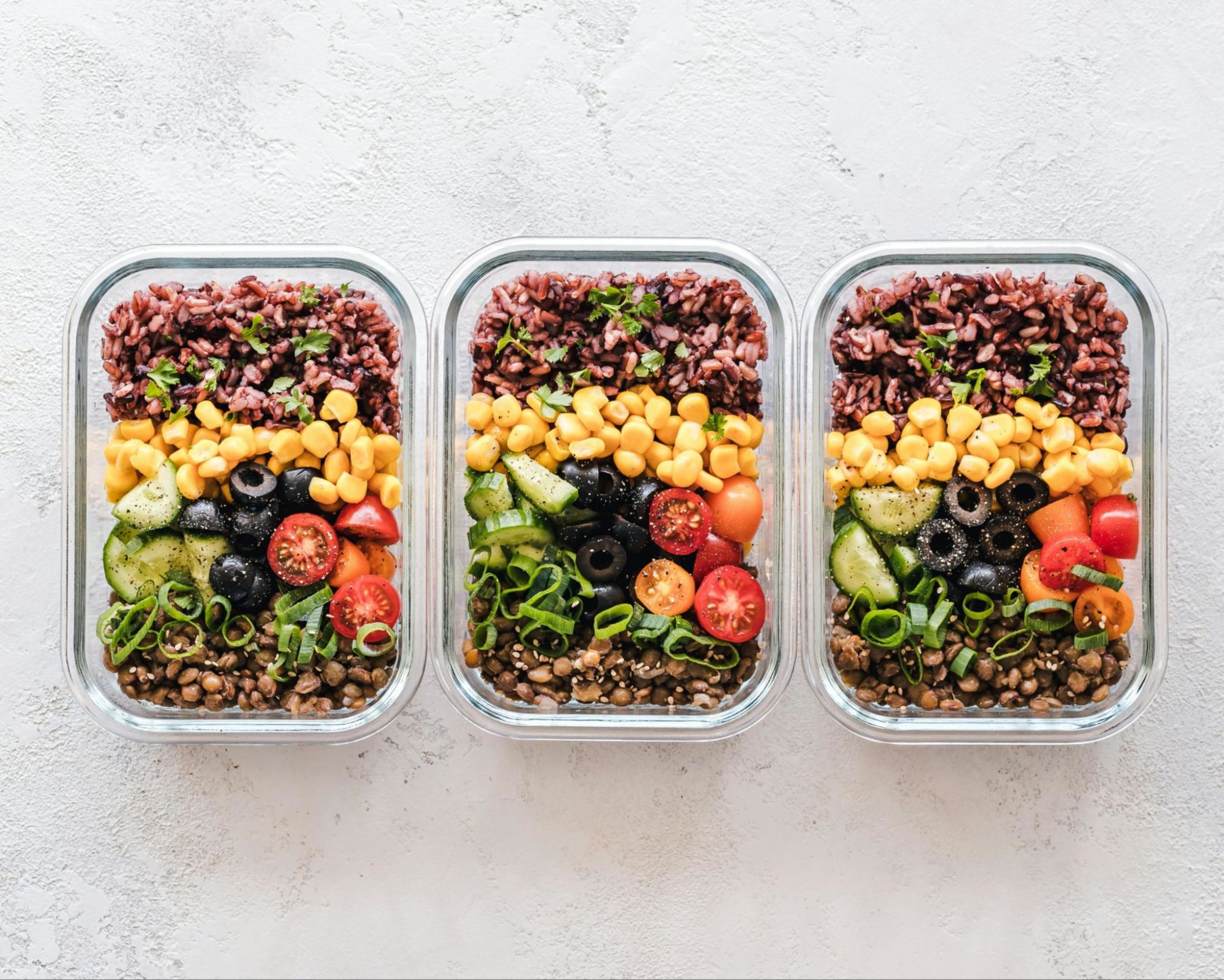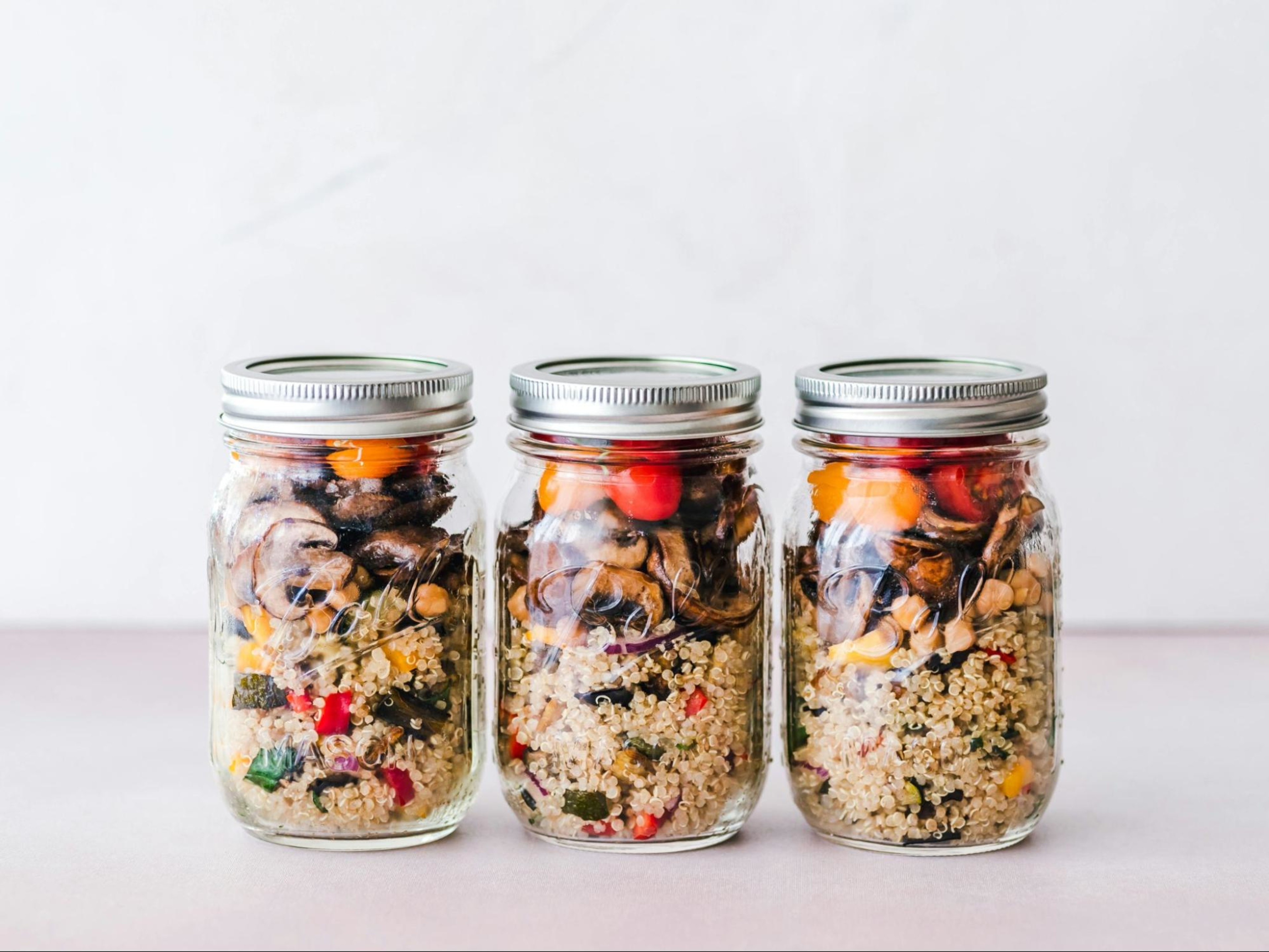The Ultimate Guide to Meal Planning: What It is, Why It's Important, and How to Start

Meal planning is more than just a buzzword in the realm of health and wellness; it’s a powerful tool that can transform your eating habits, save you time and money, and reduce stress around mealtime.
In fact, the National Library of Medicine claims, “People who cook at home eat higher-quality food, consume less calories, spend less money on food, and have less weight gain over time than those who dine out and eat prepared foods on a regular basis.”
In this comprehensive guide, we’ll explore:
Let’s dive in!
What is meal planning?
Meal planning is the process of organizing meals ahead of time, typically for a week. This process involves selecting recipes, creating a grocery list, and sometimes even preparing, washing, or cooking ingredients in advance. The ultimate goal is to streamline your nightly cooking, making it easier to prepare nutrient-dense meals without the added daily stress of deciding what to cook after a long workday.
Meal planning can vary from simply jotting down a few ideas for the week to detailed plans that include every meal and snack, complete with portion sizes and nutritional information, such as your macros (the breakdown of proteins, fats, and carbohydrates in your overall diet).
The extent to which you plan is entirely up to you and can be tailored to fit your lifestyle and needs. As you become more comfortable with the process, you can taper up or down in details as well.
The benefits of meal planning
Meal planning your food for the week can provide a host of benefits to you and your family, including:
1. Saving time and reducing stress
One of the primary benefits of meal planning is the significant time it saves. By deciding in advance what you’ll eat for the week, you eliminate the daily decision-making process and the associated stress.
At the end of the day, you may suffer from decision fatigue, so why not eliminate one more choice by making it ahead of time? Instead, you can batch cook or prep ingredients at the start of the week to ensure cooking your meals throughout the week is both quick and easy.
2. Saving money
Meal planning can lead to incredible cost savings. When you plan your meals, you can create a detailed shopping list, which helps to prevent impulse purchases at the grocery store. Additionally, buying only what you need can reduce food waste, which is good for your wallet and the environment.
3. Improving nutrition
Planning your meals allows you to make healthier choices. You can ensure that your diet includes a balanced variety of food groups, such as fruits and vegetables, whole grains, and lean proteins. This deliberate approach can help you avoid the temptation of unhealthy foods that may seem more convenient in the moment.
Related blog: Is Diet More Important Than Exercise?
4. Achieving dietary goals
Whether you’re trying to lose body fat, gain muscle, or simply eat healthier, meal planning can help you stay on track. By having a plan, you’re less likely to deviate from your goals and more likely to stick to your nutritional targets.
How to get started with meal planning
Getting started with your meal planning is super simple once you have the key components outlined. Check out the following to help you kick off your meal planning right:
Assess your needs
Gather supplies
Choose your recipes
Create a shopping list
Let’s dig in!
1. Assess your needs
Before diving into meal planning, assess your needs and goals. Consider your dietary preferences, any specific health goals, and your schedule. Are you cooking for a family or just yourself? Do you have any dietary restrictions or allergies? Are you trying to find foods that support healthy cholesterol levels? Could you benefit from a planning app to visualize your meals and grocery list? Honing in on your specific needs will influence what you pick for your meals.
2. Gather supplies
To start meal planning, you’ll need some basic supplies:
A notebook or digital planning app
Recipe sources (cookbooks, websites, or meal planning services)
Storage containers for prepped ingredients and meals
3. Choose your recipes
Start by selecting a few recipes you want to try. Aim for a mix of your favorite dishes and new ones to keep things interesting. If you’re new to cooking, choose simple recipes with just a few ingredients to build your confidence.
4. Create a shopping list
Once you have your recipes, create a detailed shopping list. Group items by aisle or category—produce, dairy, meat, etc.—to make your grocery shopping more efficient. Don’t forget to check your pantry and fridge for items you already have to save money.
Steps to successful meal planning
Successful meal planning is as easy as pie. Take a look at our easy steps to set yourself up for success:
Plan your meals
Shop smart
Prep ahead
Stay flexible
Review and adjust
Let’s get started!
Step 1: Plan your meals
Dedicate time each week to plan your meals. Decide what you’ll have for breakfast, lunch, dinner, and snacks. Consider incorporating theme nights like Meatless Monday or Taco Tuesday to simplify the planning process.
Step 2: Shop smart
With your shopping list in hand, head to the grocery store. Stick to your list to avoid impulse buys. Shopping once a week is often more efficient than making multiple trips, saving you time and money. Alternatively, you can use a grocery delivery service to eliminate the trip and save even more time.
Related blog: How to Eat Healthy Without Cooking
Step 3: Prep ahead
Set aside a block of time to prepare your ingredients or even cook entire meals. This might involve chopping vegetables, marinating meats, or cooking grains. Prepping ahead can make weekday cooking faster and less stressful. You can even binge your favorite show while you work for some guilt-free TV time!
Step 4: Stay flexible
While having a plan is crucial, it’s also important to be flexible. Life happens, and sometimes you’ll need to adjust your plan. Keep a few quick, easy meal options on hand for those inevitable busy days. Consider freezing healthy, individual-sized meals that can easily be defrosted and reheated in a pinch.
Step 5: Review and adjust
At the end of each week, review what worked and what didn’t. Adjust your plan based on what you’ve learned to continually improve your meal planning process. Make note of your favorite recipes and abandon those that didn’t satisfy your taste.
Where to find meal planning recipes
Finding the right recipes is a key part of successful meal planning. Here are some great sources to explore:
Cookbooks
Tried and true, cookbooks are a great investment and make a wonderful addition to a kitchen library or as a coffee table topper. Choose cookbooks that align with your dietary preferences and goals, specifically ones that focus on healthy meals and offer a variety of easy-to-follow recipes.
Websites and blogs
There are countless websites and food blogs dedicated to meal planning. Sites like Allrecipes, Epicurious, and the Food Network provide extensive recipe collections and meal planning tools. Choose a few bloggers you like and start to cook some of their highest-rated meals.
Social media
Platforms like Pinterest, TikTok, and Instagram are treasure troves for meal planning inspiration. Follow food bloggers, nutritionists, and chefs for fresh ideas and step-by-step videos on how to make delicious meals.
How to create a weekly meal plan template
Creating a weekly meal plan template can streamline your planning process and ensure consistency. Here’s how to do it:
Choose a format
Outline your days
Fill in your meals
Add a shopping list section
Customize as needed
Let’s discuss some more details:
Step 1: Choose a format
Decide whether you prefer a digital or paper format. Digital templates can be easily edited and reused, while paper templates can be posted on your fridge for easy reference.
Step 2: Outline your days
Create a grid with days of the week across the top and meals down the side. This structure helps you visualize your entire week at a glance.
Step 3: Fill in your meals
Using your chosen recipes, fill in each meal slot. Aim for variety and balance. Include protein, vegetables, fruits, and whole grains. Don’t forget to account for leftovers and any special occasions.
Step 4: Add a shopping list section
Include a section for your shopping list. As you plan your meals, jot down the ingredients you’ll need to buy. This integrated approach keeps everything in one place and simplifies grocery shopping.
Step 5: Customize as needed
Tailor your template to fit your lifestyle. If you prefer batch cooking on weekends, add a section for prep tasks. If you like to track your hydration or exercise, include those elements too. Consider extra snacks for pre- or post-workouts.
How to avoid common meal planning challenges
While meal planning can be a simple way to elevate your nutrition game, there are some common pitfalls that can provide challenges along the way. Check out our tips for how to avoid these common issues:
Overcomplicating the process
Lack of variety
Not being realistic
Ignoring leftovers
Failing to prep
Skipping the review
Keep reading for how to avoid each of these issues.
1. Overcomplicating the process
One common pitfall is trying to plan elaborate meals every day. Keep it simple and consistent to hold yourself accountable, especially when you’re starting out. Choose recipes with few ingredients and minimal prep time. Consider using a slow cooker on busy days to have dinner ready when you get home from work.
2. Lack of variety
Eating the same meals repeatedly can lead to boredom. Mix things up by trying new recipes and incorporating seasonal produce. Change up your theme nights if they start to get boring or try different variations of your themes.
3. Not being realistic
Be realistic about your schedule and energy levels. If you know you have a busy week ahead, opt for quick and easy meals or that trusty slow cooker to make your eating easier.
4. Ignoring leftovers
Leftovers can be a lifesaver on busy days. Plan leftovers by cooking extra portions of repurposing ingredients into new dishes. Freeze any you know you won’t get to so you’ll have an easy meal to reheat on a busy day.
5. Failing to prep
Meal prep is a crucial part of meal planning. Set aside time each week to chop, cook, and store ingredients. This prep work will make cooking during the week much smoother.
6. Skipping the review
Regularly reviewing your meal plan helps identify what works and what doesn’t. Take note of which meals were hits and which ones need tweaking. Continuous improvement will make meal planning more effective and enjoyable.
Meal planning: Final thoughts
Meal planning is a powerful strategy to improve your diet, save time and money, and reduce mealtime stress. By understanding what meal planning is, recognizing why meal planning is important, and learning how to start meal planning, you can transform your eating habits and enhance your overall well-being. Remember to start simple, stay flexible, and continually adjust your plan based on what you learn along the way. With these tips and tools, you’re well on your way to becoming a meal planning pro. Happy eating!

Real strength keeps moving
Learn how working out with Hydrow can help support a fuller, more active life.









